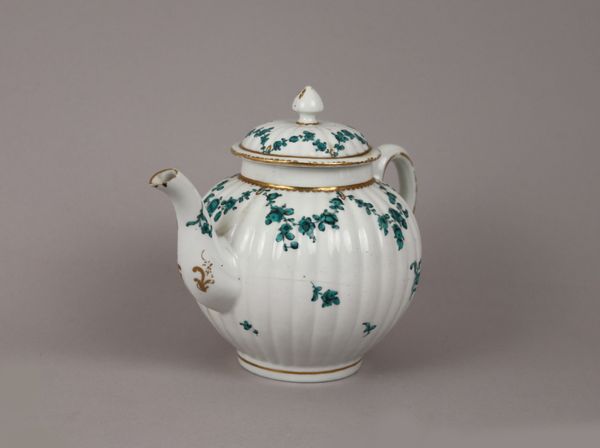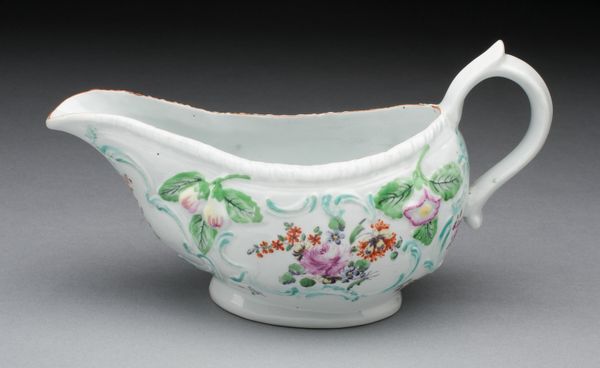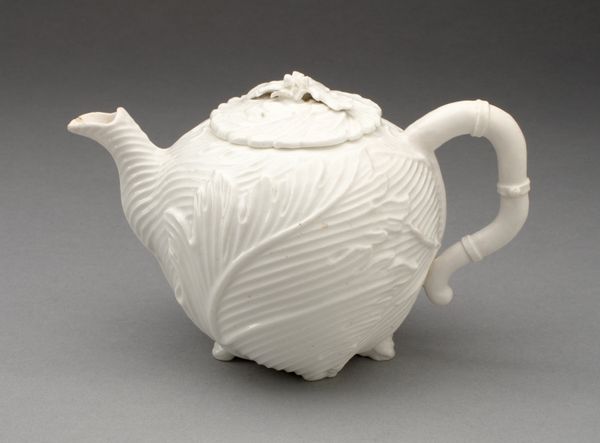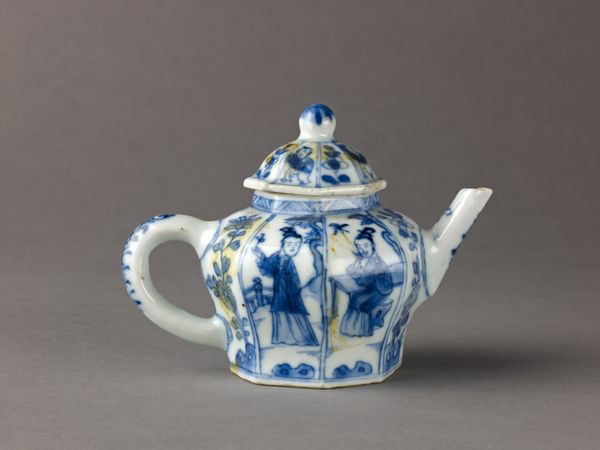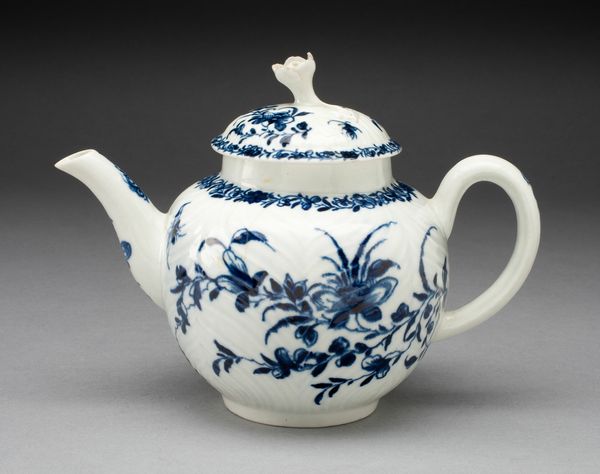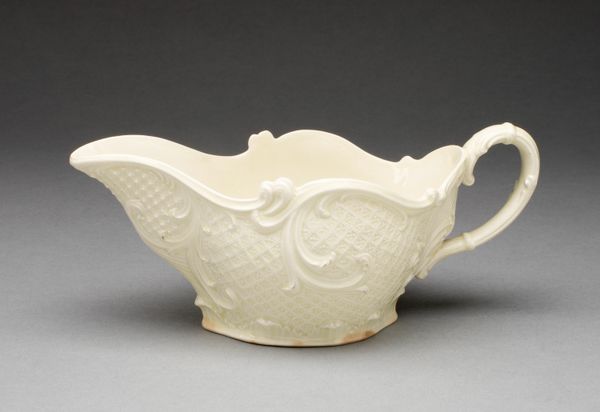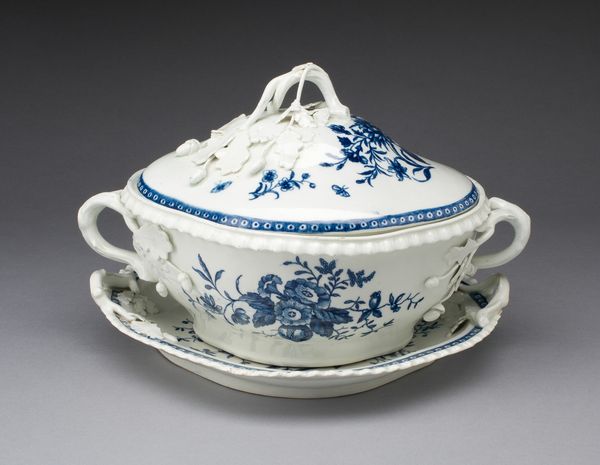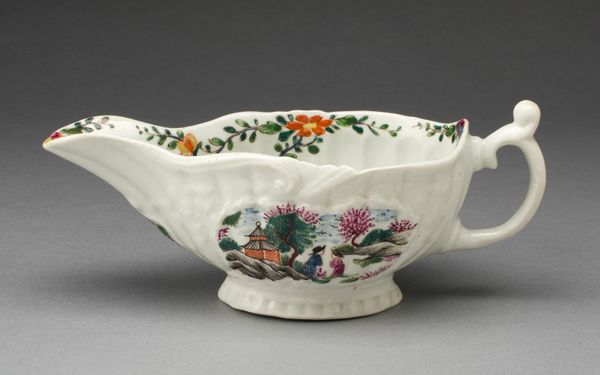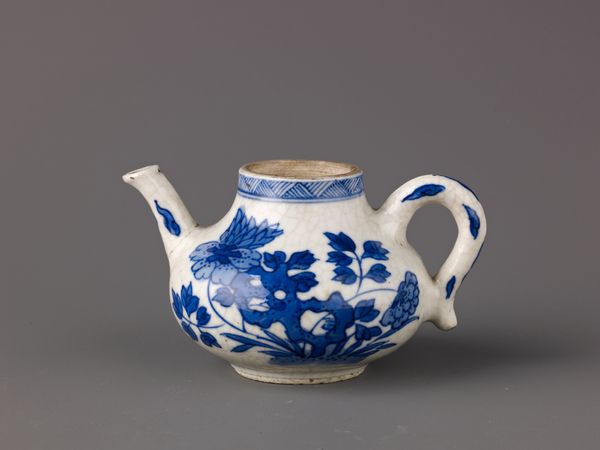
ceramic, porcelain
#
ceramic
#
porcelain
#
ceramic
#
decorative-art
#
rococo
Dimensions: 5.6 × 10.6 × 5.9 cm (2 3/16 × 2 1/3 × 4 3/16 in.)
Copyright: Public Domain
Curator: Right now we’re looking at a “Creamer,” produced around 1755 by the Worcester Royal Porcelain Company. Doesn't it just glow? Like moonlight captured in porcelain? Editor: It’s intensely delicate! Visually, it feels almost weightless, as though it might float away. That pristine white coupled with that subtle floral relief… Curator: Absolutely. And notice how that floral relief isn’t just decorative—it subtly distorts the form, playing with light and shadow. We need to appreciate the historical context: refined porcelain became synonymous with elevated status during this period. What does a creamer like this mean, materially? Editor: Oh, right away, the labor—from the kaolin clay, the specialized craft, firing temperatures, not to mention transporting these fragile wares across oceans! A little vessel speaks volumes about global trade networks and exploitative labor. Think of the tea it served with! Sugar, another story altogether, was a commodity reliant on slavery... it is complex. Curator: And that complex web gives rise to something exquisitely beautiful, almost deceptively so. The Rococo style, which emphasizes asymmetry and elaborate ornamentation, is on full display here. What’s especially remarkable, too, is the way it bridges form and function so seamlessly. Editor: That handle especially grabs me; it doesn’t look easily mass-producible. Curator: Precisely! And that would certainly be the case for 1755. It all underlines how much skilled handwork was invested, really making it into an intimate dance between artisan, material, and object. The maker had agency to make small distinct decisions at every step. Editor: Which reminds me that behind its elegant veneer lies the sheer physical effort—quarrying materials, maintaining furnaces—an almost invisible aspect often overlooked when admiring these delicate items in display cases. It shows me a social context for refinement and labor that speaks so directly to this moment, as well. I almost think I can see both, when I give it more than a glance! Curator: Yes, both stories. Cream was luxury too. When I contemplate the object now I understand my appreciation must be for all of that process and labor, not just the immediate and quiet refinement in front of my eyes.
Comments
No comments
Be the first to comment and join the conversation on the ultimate creative platform.

